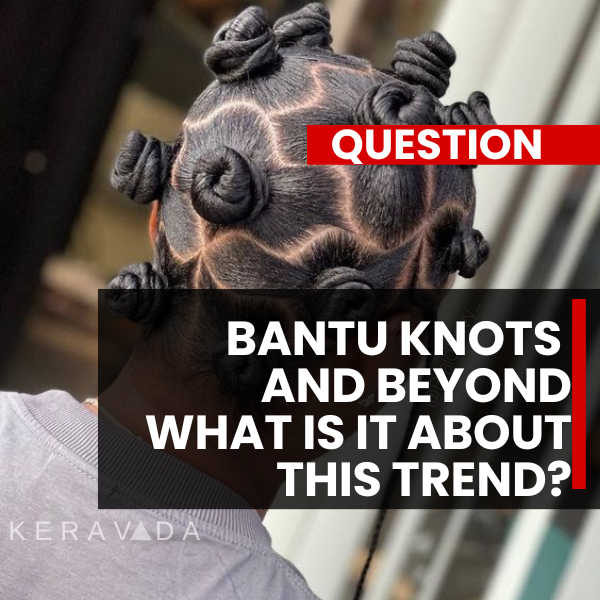Introduction
Bantu knots have become a fashionable hairstyle worn by people of all ages and ethnicities. Variations like Bantu knots with braids and Bantu knots for kids have expanded the creative styling possibilities while retaining cultural symbolism. The sculptural coils of Bantu knots make a bold statement, nodding to the heritage of Bantu-speaking peoples across Africa.
Historical Origins and Significance
The roots of Bantu knots can be traced back centuries to the traditional hairstyles of Bantu tribes in sub-Saharan Africa. The technique of twisting or knotting hair into coiled shapes is an ancient practice used for functional and aesthetic purposes. Zulu knots were worn by the Zulu people of southern Africa, while Bantu knots refer more broadly to similar styles among Bantu groups.
These knotted hairstyles held cultural and spiritual importance and were used in coming-of-age rituals and ceremonies and as symbols of identity. The number and pattern of knots could indicate marital status, age group, or milestone events. Bantu knots have continued to represent cultural pride and empowerment into the modern era.
What do Bantu knots represent? Cultural Appropriation vs. Appreciation
When Bantu knots appear outside their original cultural context, the line between appropriation and appreciation becomes complex. Bantu knots dreads and Bantu knots on natural hair worn by people not of Bantu descent have sparked heated debate.
Cultural appropriation occurs when elements of a minority culture are adopted insensitively by the dominant culture, erasing meaning and context. Bantu knots may be seen as inappropriate when worn ignorantly as a trend rather than respectfully engaging with their significance.
However, borrowing can move into appreciation when there is an exchange and acknowledgment of a style’s roots. Wearing Bantu knots with research and care to honor their origins leans toward cultural appreciation. Dialogue, education, and crediting inspiration help transform appropriation into sincere appreciation.
Bantu Knots as a Symbol of Empowerment
The simple act of styling one’s hair can become an impactful symbol of identity and empowerment. Bantu knots hold deep meaning in many Black communities, representing pride in African heritage and beauty standards. The ability to sculpt Bantu knots into Bantu knot outs, voluminous curled shapes, allows creative expression of identity.
During the 1960s Black Pride movement, Bantu knots gained visibility as a symbol of embracing natural hair and rejecting Eurocentric ideals. The ongoing natural hair movement continues to promote Bantu knots as part of celebrating multicultural beauty and affirming self-worth. Reclaiming styles like Bantu knots asserts confidence and self-definition.
Modern Adaptations and Styling Techniques
While staying true to tradition, Bantu knots have also evolved with the times. Modern variations have made Bantu knots accessible and stylish for all hair types. Even Bantu knots short hair is possible by coiling small sections. Bantu knots on short locs work by twisting the ends of cropped locks.
There are no strict rules – get creative, twisting sections neat or messy, big or small. Use accessories like beads or gold hoops to decorate. Combine with braids and weaves for styles like Bantu knots loc styles. Play with partings to form zigzags or geometric shapes.
The knotting technique secures the coil in place. Divide dry hair into squares and twist from root to end, then wrap the strand into a knot. Repeat until the head is covered in knotted coils. Finish by dipping ends in warm water to seal. Let dry overnight and unleash gorgeous spiral curls.
Bantu Knots in the Global Fashion Scene
From traditional African hairstyles, Bantu knots have exploded onto the global fashion scene. Pop stars like Alicia Keys and Beyoncé have rocked Bantu knots on the red carpet. Runway models have strutted styles like Bantu knots half up half down. Festival-goers have embraced looks like the Bantu knot mohawk.
Bantu knots keep appearing across social media, music videos, and more. The mainstream spotlight has sparked renewed interest, with people around the world trying Bantu knots for curls and making the style their own. Now a versatile fashion trend, Bantu knots also pay homage to the rich cultures that popularized them.
Conclusion
Bantu knots weave together creativity, beauty, and cultural heritage. This ancient African hairstyle tells a story across generations. Variations like Bantu knot locs, the loc Bantu knot, and Bantu knot styles with braids continue to evolve the tradition. The enduring influence of Bantu knots can be seen in trendy styles like Bantu knots hairstyles, Bantu knots with locs, Bantu knots on braids, and beyond. More than just a hair trend, Bantu knots give voice to history and culture with each hand-sculpted coil. Their heritage endures as Bantu knots keep making their mark in hair styling and cultural identity.

